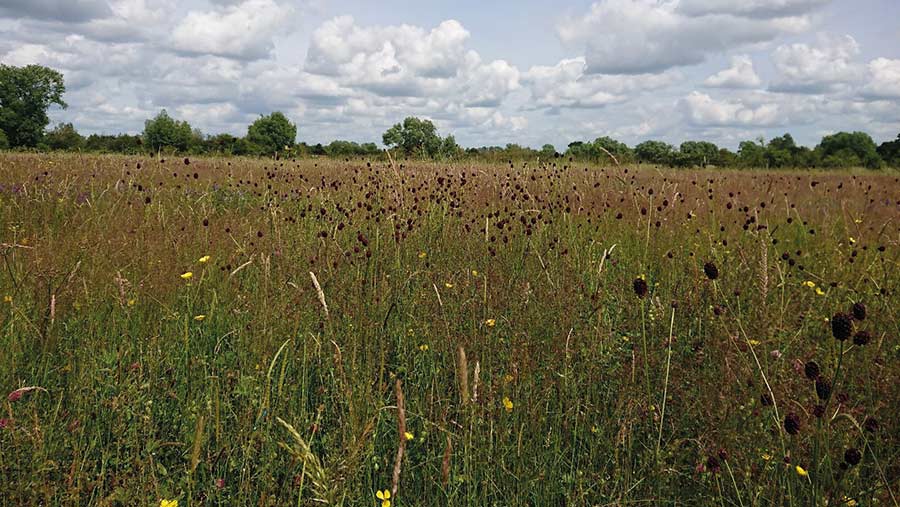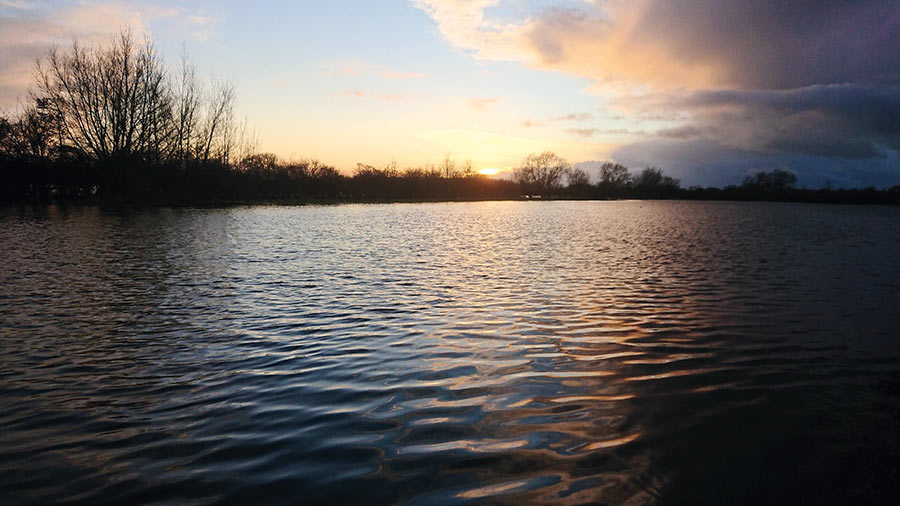How a beef farm is using marginal land to produce valuable forage
 © Carl/Adobe Stock
© Carl/Adobe Stock A beef farmer is using marginal land to increase the value of output from his grassland farm.
This strategy is helping Andy Rumming produce high-quality beef and improve the wildlife value of the extra land he is managing.
Mr Rumming farms on the banks of the Thames near Cirencester. Waterhay Farm is home to a 90-head herd of sucklers, half of which calve in March/April, and the other half in the summer.
See also: How multi-species swards can increase grassland production
Breeds are mixed and include Stabiliser, Hereford-cross and British Blue-cross, with a maternal Stabiliser bull and a terminal Hereford bull.
Farm facts: Waterhay Farm
- 80ha (198 acres) permanent pasture, plus 30ha (74 acres) marginal land
- Pasture for Life-certified
- 90-head sucklers of mixed breeds: Stabiliser, Hereford-cross and British Blue-cross
- 50% calving March/April and the other half in the summer
- Beef sold through the on-farm butchery
Grass-based beef
The diet is grass-based, with 80ha (198 acres) of permanent pasture. Semi-permanent fencing is used to divide fields into two lanes, with the daily paddock size varying depending on the previous day’s residuals.
All groups of cattle are moved daily, or twice in the case of bad weather. No nitrogen fertiliser is used, with farmyard manure applied instead after silage in June.
Mr Rumming also has access to 30ha (74 acres) of marginal land, which yields species- rich standing hay that can be used for winter feed.
“What we’re about is taking marginal land – ideally for free – and converting it into high-value beef products that people want and go out of their way to buy.”
This includes beef from the farm’s butchery, which is marketed as pasture-fed and high welfare, and luxury leather goods.
Though many people may regard this marginal land as unproductive, Mr Rumming disagrees. The area is prone to flooding but, when the water subsides, what is left is “amazing species-rich grassland”, he says.
“What we’re essentially doing is expanding our farmed area by buying in this standing hay, making it into bales, and bringing it back to the farm where we’re utilising it to feed our dry cows.”

© Andy Rumming
Environmental benefits
The benefits go beyond cost-effective feed. Mr Rumming is working closely with organisations that own some of this land, such as Natural England, to improve its environmental value.
“At North Meadow [one of our areas of land], where we make most of the hay, there are 106 different species that have been recorded – not including [those] in the hedges, ditches and edges.

Great burnet © Willy Kreeft/Wirestock/Adobe Stock
“Species that are ‘iconic’ to these particular flood plain meadows are snake’s head fritillary, great burnet and pepper saxifrage.
“To thrive, all of these [species] need the nutrients removing [through] a well-timed hay cut to stop the grasses dominating.”
The cutting window is dictated by botanists who monitor the species, but is usually in mid-June.
This type of land, which includes sites of special scientific interest (SSSIs) and nature reserves – does not tend to be in high demand, says Mr Rumming.
He is continually on the lookout for similar areas that offer him the opportunity for a cost-effective way to expand his forage area and help to improve the environment.
“One way of doing this is just looking around – if you find a bit of land that you think no one is using, you [can] just go onto the land registry and for £3 you can find out the details of the owner.”
He says he has had a lot of luck doing this and then sending a letter to explain about his ethos and aims and asking the landowners if they are interested in collaborating. “We’ve built some really good relationships from that.”

Flood-prone land can provide species-rich forage for winter feed © Andy Rumming
Cost-effective expansion
In terms of cost of the land, some of the agreements are paid for, some are free of charge and others – where the land is an SSSI in a poor state – Mr Rumming is paid, per bale, to take the bales off.
“Five to 10 years ago, our business was all about owning land and farming our own land. Now, 50% of our business is about farming other people’s [land], without proper tenancies and with individual haymaking licences.
“It’s just something to think about – there are other ways of expanding your farm that actually improve the environment and can be quite financially beneficial.”
Benefits of soil organic matter analysis
Cornish beef and arable farmer-turned consultant Tom Tolputt has been digging deeper into the carbon impact of how grassland is managed via his independent, regenerative and biological farm consultancy service, Terrafarmer.
Mr Tolputt’s interest in optimising nutrition comes from a background of high-input dairy nutrition.
He noticed the dairy farmers who were better managing their soils, and those growing and grazing more grass, had better profitability and less reliance on inputs.
“The by-product of good farming – rotational grazing, reduced tillage – is that you build organic matter.
This helps you reduce inputs and store more water, so it’s one of those very rare things that is a win-win for all of us, as agriculturists.”
He says that each 0.1% increase in soil organic matter is equal to 8.9t of carbon dioxide removed from the atmosphere and 2.5t of carbon increased in the soil.
As part of the Terrafarmer service, Mr Tolputt analyses soil organic matter using a machine that can scan 80ha (198 acres) a day – or 160ha (395 acres) if carrying out 2ha (5-acre) sample points.
Precise location
The technology uses GPS to mark the soil sample location, so farmers can return to the same spot to see how soil is improving. It can also sample up to three different depths.
The range of soil organic matter is displayed in colour gradients, with dark blue signifying high organic matter areas and green at the other end of the spectrum.
The benefits of the mapping have been observed on several farms. In Somerset, mapping the soil has allowed one farm to better identify its areas of high and low organic matter.
“The farmer now spreads slurry on dark blue areas because he’s got loads of organic matter there, and he puts farmyard manure onto the light areas where there is low organic matter because he is aiming to build this soil and reduce his inputs,” says Mr Tolputt.
He adds that other benefit of this – which is starting to be observed – is increased forage yields. “This is because he is targeting what the soil didn’t have, and where it is needed.”=
Andy Rumming and Tom Tolputt were speaking at the recent inaugural Rootstock conference held in Devon
